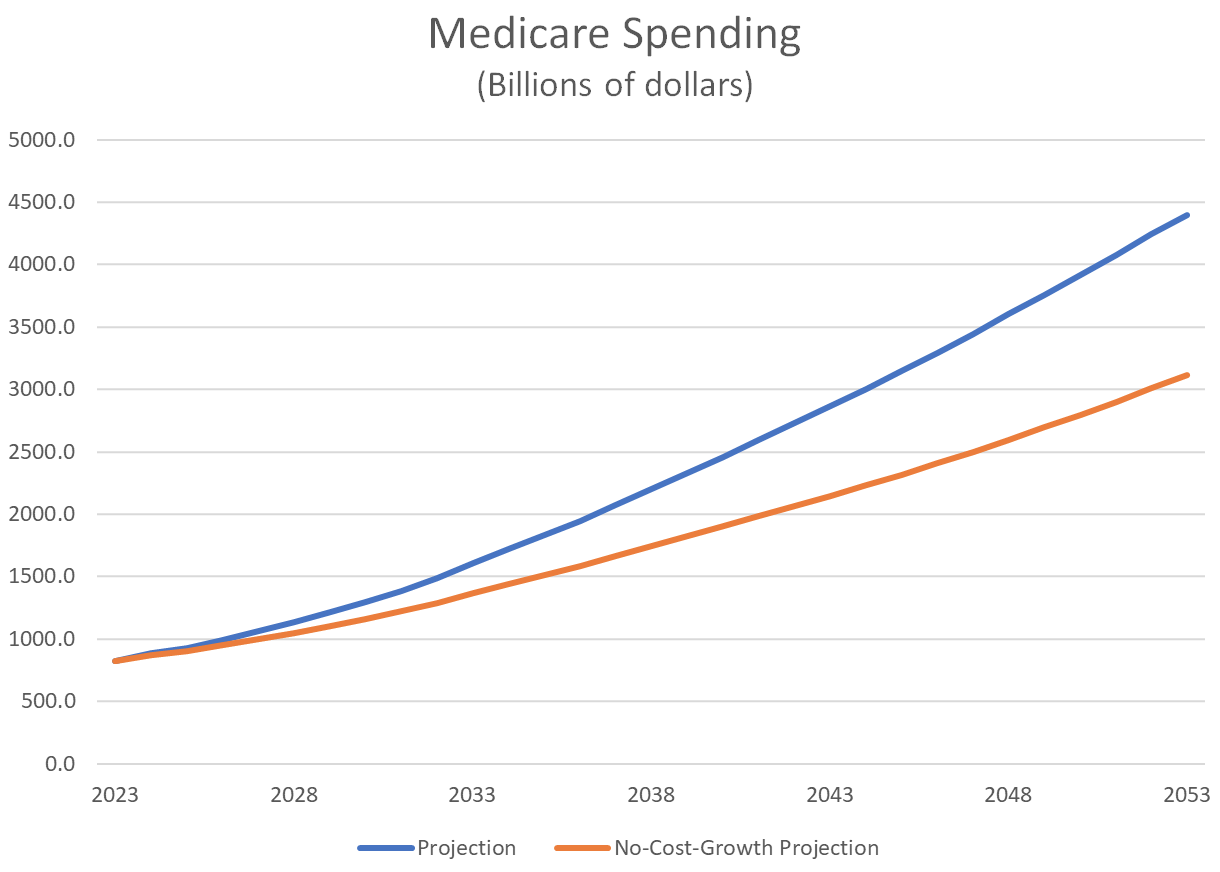The Daily Dish
September 20, 2023
There It Goes Again
It is important to keep an eye on the crafty New York Times. Not long ago, it ran an article entitled “A Huge Threat to the U.S. Budget Has Receded. And No One Is Sure Why.” The gist of the article was that Medicare had transformed from a perennial fiscal threat and political worry to a benign presence.
Why? “Instead of growing and growing, as it always had before, spending per Medicare beneficiary has nearly leveled off over more than a decade.” In particular, a bit over a decade ago the Congressional Budget Office (CBO) projected Medicare spending per beneficiary would be $22,006 in 2023. Instead, it is $12,459. Problem solved, right?
Not so fast! It does not matter a whit if spending is lower than previously projected. What matters is the current projection. Focusing on what CBO said a decade back is a way of distracting from the current projections that show impending insolvency and untenable pressure on the federal budget. The current projection for Medicare spending (see chart below, blue line) in CBO’s Long-Term Budget Outlook is a key element in the witch’s brew of spending programs that are spiraling the federal debt ever northward.
The other important error in the Times is the focus on cost per beneficiary. The fundamental problem is the demographics and the rapidly rising number of beneficiaries. Even if “excess cost growth” (the amount by which growth in spending per beneficiary exceeds growth in gross domestic product) magically disappeared – which is essentially the Times’ contention – Medicare spending will more than triple over the next quarter century. (See the orange line in the chart.)
The bottom lines are very simple. First, the nation needs Medicare reforms so seniors have care they can count on, the federal budget does not transform from a chronic disease to an acute episode, and the headwinds to increase in the standard of living are diminished. Second, do not get your fiscal education from The New York Times.
Fact of the Day
Delinking pharmacy benefit manager payment from the rebates they negotiate is likely to increase annual federal Medicare Part D spending by $3–$10 billion.











